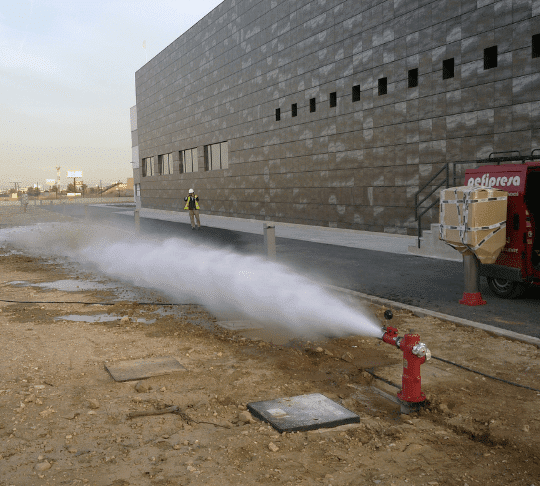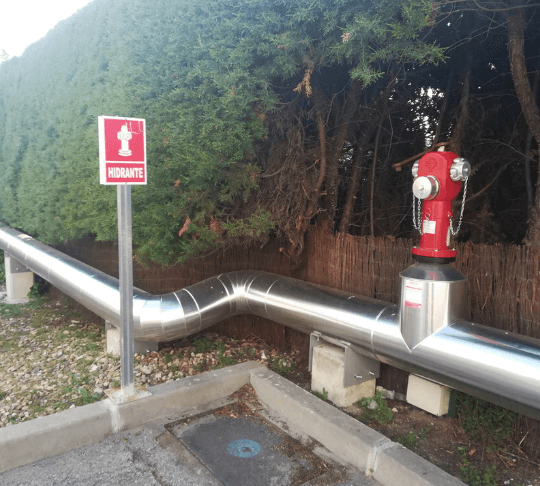Fire Hydrant System
FIRE HYDRANT SYSTEMS
INTRODUCTION
The concept of hydrants originated in the 17th century where firefighters at the time used water networks with access points, with chains of people with “buckets in hand”. This later became a model of fire trucks with manual pumps.
A hydrant is a fixed extinguishing system designed to carry the extinguishing agent (water or foam) in large quantities to any external point (of the risk to be protected) and would normally be handled by specialized firefighting personnel. It enables firefighters to refill their water tanks for extinguishing purposes.
They are designing to protect all the structure.
They are accompanied by with auxiliary materials for handling.
These can be of the following types:
- Wet Column (Water reaches the hydrant valve)
- Dry Column (valve is buried below, ideal for frost prone areas)
- Pit
They consist of:
- 2 outlets Ø 70 mm and one Ø 100 mm (dry or wet column)
- 1 or 2 Ø 70 mm outlets (pit)
PEFIPRESA, in its aims to make society safer by raising fire security in buildings and facilities, it leverages its extensive experience and high quality work to improve and maximize efficiency in its installations and maintenance projects. As a consequence this also reduces the impact on fire departments and firefighters.

BASIC PRINCIPLES
Fixed extinguishing systems with fire hydrants are a network of pipelines to supply water or foam and are conveniently distributed according to the type of risk to be protected. They must comply with the minimum regulatory requirements and ensure a continuous flow of water.
As far as design is concerned, it is important to take into account the measurements of real distances (horizontal measurement) from any hydrant. Additionally, note that special attention should be paid to facades, always highlighting the main one for obvious reasons of accessibility for the firefighting services. Also, to place the hydrants outside of circulation steps, parking of any kind, correctly marked and highly visible to reduce the timeframe of the intervention to reduce the risk of damage.
A network with a ring based distribution and sectorization valves are essential to ensure the operation even when faults occur. Should some sections fail, there is sufficient back up on the network to protect the rest of the installation. Combining these with both aerial and buried networks can support the mechanical efforts typical in this type of facility.
Finally, it is important to highlight the role played by hydrant auxiliary booths that must be correctly located with full accessibility and visibility, all their elements in correct use, status and accessibility to the equipment they contain without elements that prevent quick opening.
In any fire protection system, its reliability is imperative. PEFIPRESA has both human and technical resources and the experience of thousands of installations carried out in order to ensure optimum design, installation and maintenance for perfect operation in case of fire.



